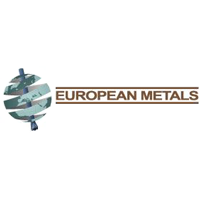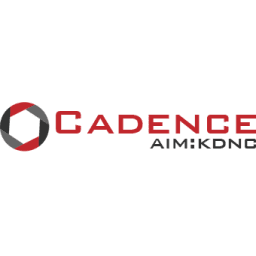European Metals Holdings Limited ORD NPV (DI) (LON:EMH) Managing Director Keith Coughlan caught up with DirectorsTalk to discuss the production of battery-grade lithium carbonate from a second process route for their Cinovec Lithium project
Q1: Keith, I see today that you’ve produced lithium carbonate from a second process route, why is this important to you?
A1: Yes, you’re right Giles, we have. We produced battery-grade lithium carbonate last year as part of our scoping study using an acid leach process, L-Max, and we’ve been researching other process technologies this year with Dorfner Anzaplan in Germany, basically that’s in an attempt to find the very best alternative processing route for the project. As part of that process we have now narrowed down our work to these two alternatives, the L-Max I mentioned and the sodium sulphate roast that we’ve used to produce this sample of battery-grade lithium carbonate. Now it’s important for us to have the two alternatives basically so we can undertake an accurate comparison of both with regards to Cinovec ore and with regards to all perspectives so things like the operating costs, the CAPEX costs, bi-product credit etc. and also to examine the quality of the end product that we can make.
Q2: There seems to be some questions with regards to the potential costs of the process being a roast, do you think it’d be a more expensive option?
A2: No, not at all. If we thought that the roast would be more expensive than the process we’ve already used then we wouldn’t have spent the time and money and the effort to explore it and produce this battery-grade lithium carbonate. I think when people say the word roast there’s a misconception about that just in general but also in particular about energy costs, there are a number of factors to bear in mind with regards to the roast process particularly the one we’re describing.
Firstly, the energy cost is one component of all roasts and the reagent cost is actually the other, both very important, now in case we’re not roasting spodumene we’re roasting a mica and it’s very different, the differences are significant.
The spodumene roast process takes place at between about 1080 – 1100 degrees Celsius compared with 850 degrees for our mica so the mica requires a lot less energy to begin with. That’s because the spodumene needs to be converted from spodumene alpha to beta so you can extract the lithium so you have to take it up to that much higher temperature to do that and then after it’s got to be cooled, milled and then roasted again, this time with acid, so it’s a much more complicated process. After that it needs to be neutralised with limestone and they’re all steps that the mica roast doesn’t require so it’s a less expensive roast process than people perhaps are generally associating with lithium extraction.
Also from the reagent point of view, the key reagent in our process is the sodium sulphate which is actually produced within the process and then recycled so that lowers the reagents costs for us appreciably. We think the cost profile is down and very comparable with the acid leach work that we’ve been doing for some time now.
Q3: So what’s the next stage of development for this process?
A3: For the sodium sulphate roast process, this is our first pass these results, they actually grade on first pass, so that’s without finessing it, washing it, doing anything like that we’ve achieved battery-grade which is fantastic. We’ll do some more work with the samples we’ve produced now over the next couple of weeks, hopefully get that done by Christmas, I’m pushing everyone hard for that. So we’ll do some further work on it, trying to refine it and optimise it, trying to get it to 99.9% pure which we’re confident we’ll be able to do so that’s through optimising the roasting and the hydrometallurgical conditions. Also just ensuring that any of the impurities in there are below all of the industry standards so that the material we end up with is acceptable to all potential offtakers and end users and when we’ve refined all of that we will be in a position to produce some samples and send them off to those sorts of people for testing. I think by the time we get that done and get to that stage we’ll be a little closer to knowing specifics about the cost of the process.
Q4: Keith, what other news can shareholders look forward to from European Metals Holdings Limited?
A4: Ok, there’s a further update on these carbonate, on the lab tests as I mentioned, also we will have some further drilling results hopefully this month, everyone’s shutting down a bit obviously for Christmas and the winter up on site but hopefully some further drilling results.
The drilling results are important as they have always been just continue to demonstrate the extent of the mineralisation at Cinovec and also to assist us in another resource upgrade that we hope to make as we get towards the conclusion of the PFS.
We had that significant resource upgrade in November and we’re hoping for another one by the time we get the PFS concluded and they’ll be further inputs to the PFS as well as the things I just mentioned about narrowing down the costs of production of the two routes that we’re currently doing further test work on and ultimately choosing one of those routes to go forward with and then the conclusion of the PFS in March of next year.


